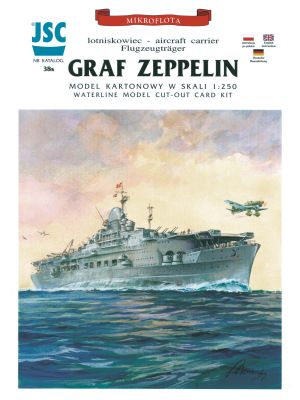Flower Class HMCS Corvette Agassiz
Scale: 1/250
Skill Level: difficult
Size (LxWxH): 250x42x75 mm (9x1x2 inch)
With this highly detailed model kit you can either build the Corvette Agassiz or one of the sister ships Wetaskiwin, Battleford or Levis. It is a wonderful model with a great level of details.
Darius Lipinski designed this model of the Flower Class corvette Agassiz already a couple of years before he met with HMV. Once we agreed on publishing this beautiful model he redesigned the kit and brought it up to date and to today's HMV standard. This model will fascinate you with its details, intelligent design solutions, and of course with the fun to build it. And building this little corvette definitely is fun.
Out of this kit you can either build the Agassiz or one of the sister ships Wetaskin, Battleford, or Levis which were basically identical to Agassiz. Now you can start your own little Canadian fleet.
The model highlights:
- with bridge interior
- depth charge launcher with rails
- detailed cannons
- scupper can be built opened
- countless details
Angaben zur ProduktsicherheitHersteller / Manufacturer:
fentens productions, Fürstenbergstr. 19, D-49716 Meppen
Kontakt: https://www.h-m-v.de/
| Product type | Papermodel |
|---|---|
| Manufacturer | HMV Hamburger Modellbaubogen Verlag |
| Scale | 1/250 |
| Designer | Darius Lipinski |
| Difficulty | difficult |
| Sheet size | DIN A4 |
| Sheets | 8 |
| Parts | 1215 |
| Length | 250 mm (9.84 inch) |
| Width | 42 mm (1.65 inch) |
| Height | 75 mm (2.95 inch) |
| Bauanleitung | German, English, Pictures |
Technical data:
- Class: Flower Class
- Shipyard: Burrard Dry Dock Co. Ltd., North Vancouver
- Commissioning: 15.08.1940
- Owner: Royal Canadian Navy
- Length: 62.48 m
- Breadth: 10.06 m
- Draught: 3.51 m
- Displacement: 940 t
- Speed: 16 kn
- Range: ca. 3500 NM at 12 kn
- Engine: 2x Scotch Kessel, Triple expansion machine
- Power: 2050 kW
- Decommissioning: 14.06.1945, scrapped 1946
The Royal Canadian Navy owned quite a few Corvettes of the Flower Class like Agassiz during Second World War. They were completely different to the earlier traditional corvettes.
The name Flower Class was invented because the British Royal Navy named their corvettes after flowers. The Royal Canadian Navy named hers after townships to honour those people who were involved in buidling the ships. Agassiz was named after the community in British Columbia. In total 270 Flower Class corvettes were built and most of them were in service in the Atlantic.
While the corvettes of the British Navy were designed for the open sea the Canadian corvettes were more specialized for their service in coastal areas. This showed particularly in their equipment for mine searching.
The Flower Class corvettes were an essential ressource for the protection of convoys in the Noth Atlantic until bigger ships like destroyers and frigates could be produced in sufficient numbers. The simple design of the Flower Class and the usage of parts and techniques from the production of merchant ships made it possible to build these ships everywhere in the United Kingrom and East Canada on small shipyards of any kind. This wouldn't have been possible with bigger or more sophisticated war ships.
After her arrival in May 1941 in Hallifax HMCAS Agassiz started her service at the Newfoundland Escort Force. Due to some reorganization she joined Escort Group 19 in September 1941. During the battle on September 18 in 1941 when she escorted a convoy together with the destroyer HMS Chesterfield and the corvettes HMCS Mayflower, HMS Honeysuckle, and HMCS Levis the latter was destroyed and sank and Agassiz took the survivors on board. Another four merchant ships sank that night, too and that's why the escort was enforced by another three corvettes. Early in 1943 Agassiz joined the Mid-Ocean Escort Force Group C1 and excorted another 12 trans-atlantic convoys without any further losses. In the first months of 1944 she received an overhaul and became then part of the Westen Local Escort Force Group W-2 and escorted North American coastal convois. In August 1944 she switched to Group W-7 and stayed their until the end of the war.
HMCS Sackville is the only surviving Flower Class Corvette of the Royal Canadian Navy. She is open for visits as museum ship in Halifax.


 Deutsch
Deutsch






















